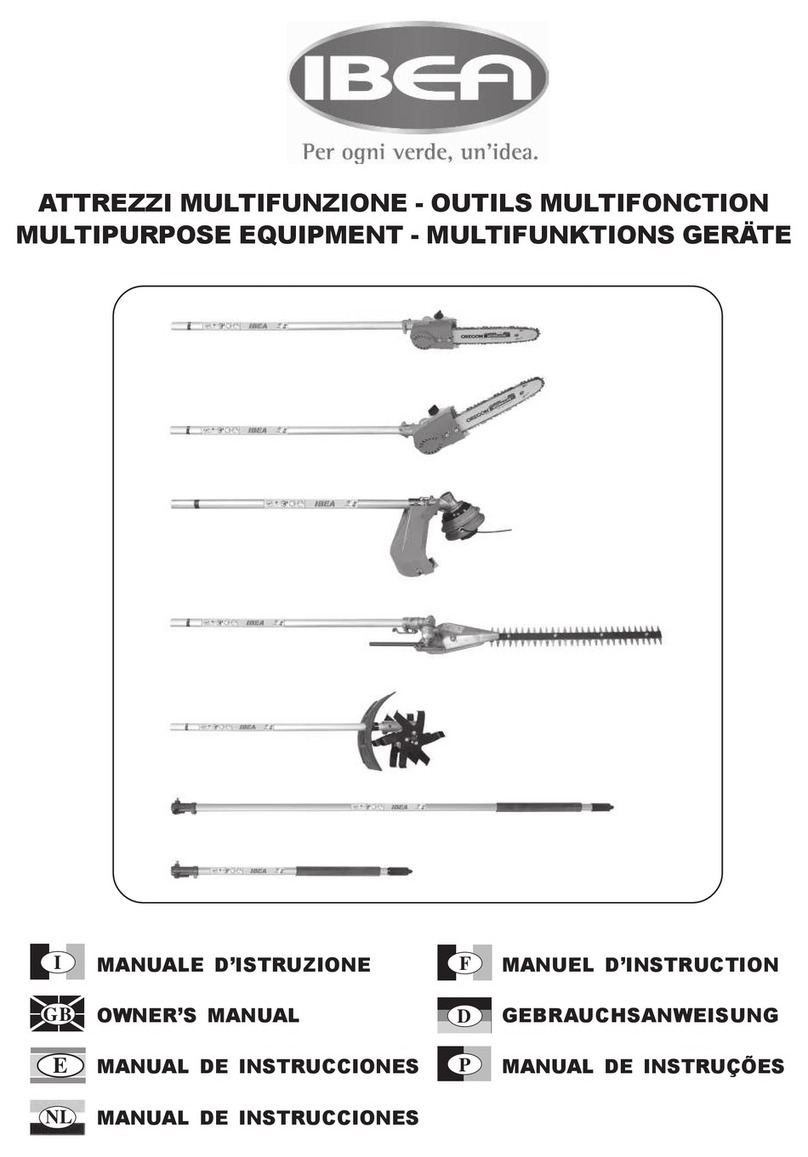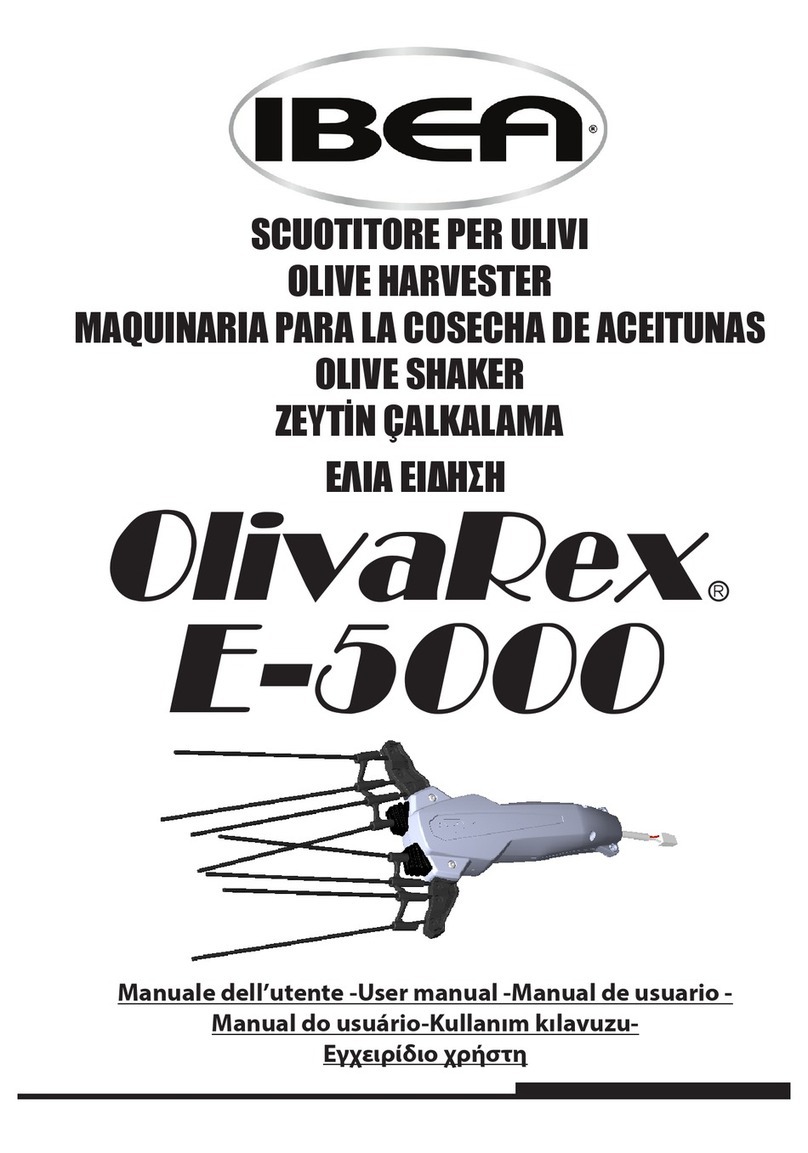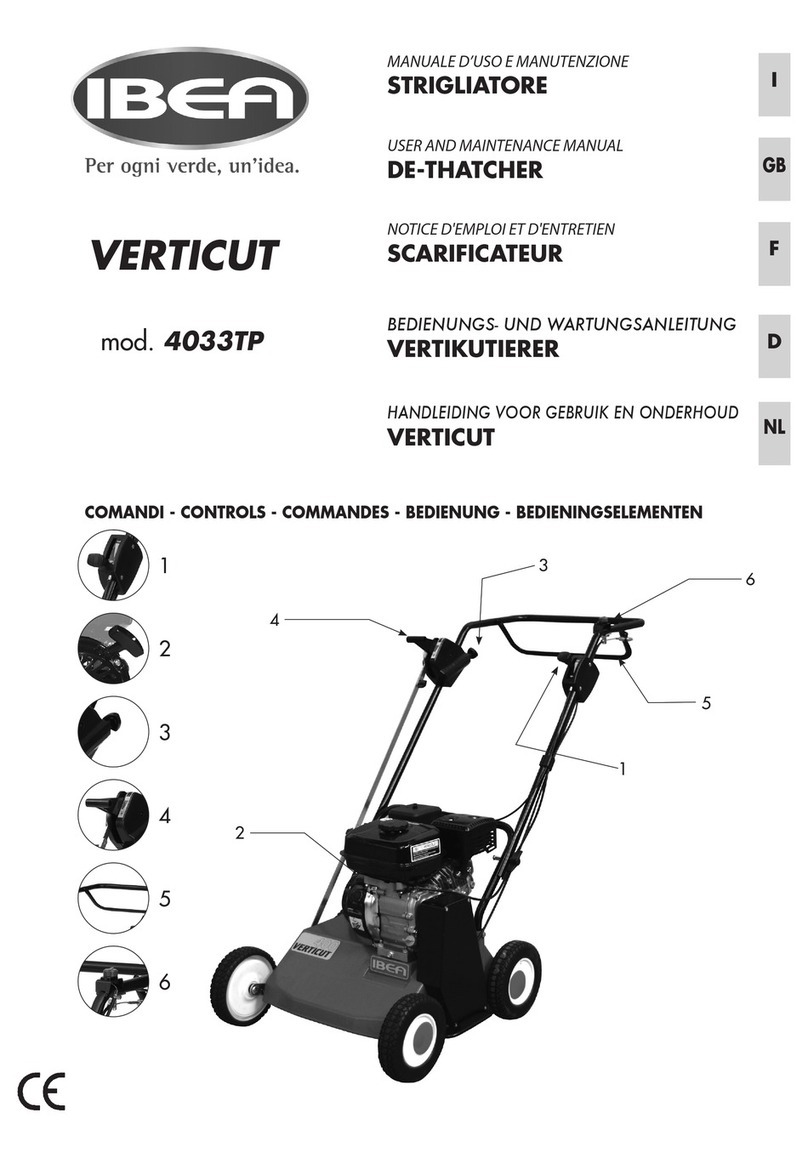
- 3 -
1. USEOFTHEMANUAL............................................................................pag. 4
2. NOTICES ONTHE MACHINE..................................................................pag. 5
3. TECHNICALDATA.....................................................................................pag. 8
4. LIFTINGANDTRANSPORTATION...........................................................pag. 9
5. MAIN PARTS OF THE MACHINE............................................................pag. 9
6. CONTROLS AND ADJUSTMENTS.......................................................pag. 10
7. ASSEMBLYINSTRUCTIONS FOR THE HANDLEBARS........................pag. 11
8. SAFETY INFORMATION
A) GENERALINSTRUCITONS..............................................................pag.12
B) TRAINING..........................................................................................pag.12
C) PREPARATION.................................................................................pag. 12
D) WORKINGUSE.................................................................................pag.13
E) AFTERWORK...................................................................................pag.14
9. TRANSPORTATIONOFTHEMACHINE.................................................pag.14
10. SAFETYSYSTEMSANDGUARDS.........................................................pag.15
11. OPERATIONSTO BE CARRIEDOUTBEFORE SWITCHINGON........pag.16
12. STARTING AND DRIVING THE SCARIFIER........................................pag. 17
13. CUTTING TIPS......................................................................................pag. 18
14. CHECKS
A) CABLECONTROL ADJUSTMENT....................................................pag.19
B) BLADE ROTOR BELT ADJUSTMENT..............................................pag. 19
C) CHECKINGAND REPLACINGTHE BLADES...................................pag.20
D) ROTOR BRAKE................................................................................pag. 21
15. MAINTENANCEAND STORAGE..........................................................pag. 22
16. CLEANINGTHE MACHINE....................................................................pag.22
17. SEASONALLONG-TERM STORAGE PERIODS..................................pag.23
18. DECOMMISSIONINGANDSCRAPPING................................................pag.23
19. TECHNICAL ASSISTANCE......................................................................pag.23
20. WARRANTY..............................................................................................pag.24
21. CE MARKING........................................................................................pag. 24
Enclosure 1. NOTES
Enclosure 2. Declaration of Conformity
- SCARIFIER MANUAL -
CONTENTS






























